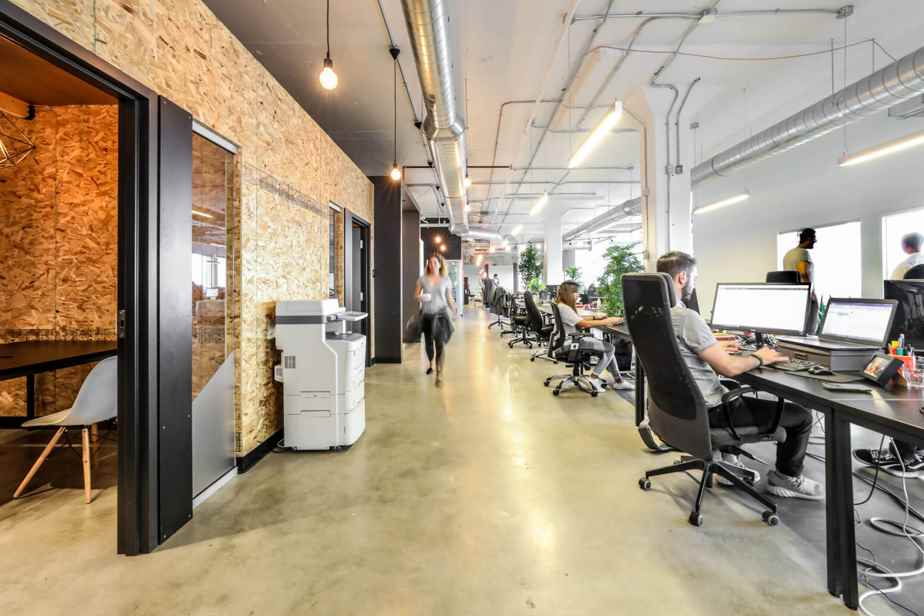The big comeback expected for September 2021 has not taken place and the return to school this fall is variable, with strong popularity for the formula of two days a week at the office. For the time being, even in the most beautiful offices in Montreal, employees are not jostling at the gate.
Posted at 6:51 p.m.
According to observations from the College of Certified Human Resources Advisors, the hybrid two-day in-office model is the most popular. “Two days pass better than three, which becomes the majority of five days in the office. It’s less easy to get people to accept, explains Manon Poirier, director general of the Order, in an interview. Employees who have two days say to themselves: well, at least, most of the time, I am at home. »
The best recommended approach for employers?
It is to be in pilot project mode. We test, we see what works, we adjust, we involve employees rather than announcing here’s how it’s going to happen.
Manon Poirier, Executive Director of the Order of Certified Human Resources Advisors
As the majority of employees return without “delusional enthusiasm”, employers must use different strategies to make time in the office have added value. Because employees have arguments for staying in the comfort of their homes, says Manon Poirier: moving to remote areas, inflation, traffic, construction, waste of time and money on travel.
Coming to the office to sit down each at their post behind a computer like at home is the challenge of the hour. “The most interesting models are those that aim to reorganize work, to take advantage of face-to-face days to make them moments of collaboration and exchange,” she points out.
The return of the 5 to 7
At Sharethrough, which gives its employees the freedom to work wherever they want, Thursdays are popular. At the end of the day, the employer serves beer and wine. “We are very involved in events that will create bonds between employees as opposed to days when we have to go to work in the office,” says Stacy Parkinson, vice-president, People & Culture. When there are lunches planned with the teams, happy hours or events, the employees come on their own. »
Similar trend at Ubisoft. “When we have a reason to come, we come,” says Antoine Leduc-Labelle, head of public relations. When we have a 5 to 7, a show, we come. In Montreal, with the “welfare Wednesday”, massage, haircut, juice bar, we see an increase in the number of employees on site.
What about the companies that have the most beautiful offices in Montreal? Do they see their employees running towards the inviting, bright and designer spaces?
100% choice
GSoft, which invested heavily in dream offices just before the pandemic, went from a company where all employees loved seeing themselves in the office to 100% choice. “The company has chosen to be digital by default to be inclusive,” explains Claire Gaillard, director, internal communications and employee experiences. “If there is only one person at home, we do the meeting by computer. We don’t want people to feel obligated to come to the office. »

PHOTO SARAH MONGEAU-BIRKETT, LA PRESSE ARCHIVES
GSoft, which invested heavily in dream offices just before the pandemic, went from a company where all employees loved seeing themselves in the office to 100% choice.
Of the 375 employees, 40 to 120 per day voluntarily frequent the work environment on Richardson Street. GSoft requires the presence of all employees only three times a year during major events.
“The main reason to come back is to see each other in person,” observes Claire Gaillard. Our offices help, because they don’t look like office cliches. »
Ubisoft, which has always had attractive premises, has just renovated part of its offices to the very latest style. A concept where comfort is put forward. “Being comfortable like at home and even better than at home,” says Antoine Leduc-Labelle, head of public relations, in an interview.

PHOTO PROVIDED BY UBISOFT
Ubisoft, which has always had attractive premises, has just renovated part of its offices to the very latest style. A concept where comfort is put forward.
At Ubisoft, managers, employees and teams determine the best place, in the office or at home, to make the best games in the world, says Louis-François Poiré, director of global health.
In this context, 65% of the 4,000 employees go to the office at least once a month. In the Sherbrooke offices, the 25 employees are all present on Wednesdays. In Saguenay, 80% of the 90 employees come to the office at least once a week.
“I don’t think anyone comes because the office is beautiful,” says Louis-François Poiré. People come to be with their colleagues, to be efficient. If the offices are not beautiful, adapted and functional, people do not come. What emerges from the conversations is: “I will not waste an hour in traffic to come and not perform well in the office.” »
Trust and flexibility
“We see a trend of employers wanting to force employees to come back to the office two or three days a week and we notice that candidates come to us, because there is no obligation”, observes for his part Stacy Parkinson at Sharethrough.
The company’s beautiful offices certainly entice employees to come, but it’s mostly the events and the opportunity to see colleagues that motivate them, she says.
According to an internal survey, 30% of the 156 employees intend never to come to the office and 70% plan to come one to three days a week.
Currently, the employees manage the change, recalls Manon Poirier. “When they return to the office, they will reconnect with their colleagues and remember that the social aspect of work is important. Maybe the return will make people want to come back more often, ”she concludes.

